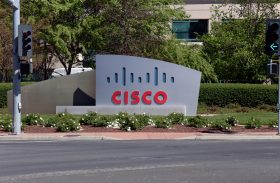HPE Powers Up GreenLake

Hewlett Packard Enterprise (NYSE: HPE) this week announced a fleet of offerings that add orchestration, security, and “silicon on demand” to HPE’s GreenLake “as a service” platform. The new wares expand GreenLake’s capabilities and boost HPE's ongoing effort to modernize the delivery of its cloud-based IT solutions.
HPE GreenLake is both an umbrella marketing tool and a managed services platform that gives enterprises access via a single console to on-premises storage, networking, virtualization, high-performance computing (HPC), backup, workloads, and other IT elements, paid for by metered usage. GreenLake also has been the linchpin in HPE’s ongoing effort to port its IT products and services to a cloud-based, subscription-payment model.
HPE used its HPE Discover 2021 virtual event this week to launch the new services, which include the following;
Silicon on-Demand. HPE worked with Intel (Nasdaq: INTC) to offer that vendor’s Optane persistent memory functions on a click-and-deploy basis. Resources will be paid for as they’re ordered. Optane has been said to be difficult to implement without help, so this should be a boon to Intel as well as HPE.
HPE GreenLake Lighthouse. This is a configuration tool for GreenLake that is based on HPE’s Ezmeral container platform, which manages enterprise workloads via open-source Kubernetes. The standout here is that Lighthouse can “autonomously optimize different cloud services and workloads by composing resources to deliver the best performance, lowest cost or a balance of both, depending on business priorities.” That’s a big advantage for IT departments looking to automate performance optimization.
Project Aurora. This service builds on HPE’s Silicon Root of Trust firmware, announced in March 2020. That technology "fingerprints" server firmware and continually checks configurations against safe setups, restoring them if need be. The technology has been extended to work across firmware, hardware, operating systems, and workloads. For workloads, users need to implement a secure identity tool such as SPIFFE and SPIRE in Project Aurora. And to start with, Project Aurora will only be offered only as an embedded feature in GreenLake Lighthouse, though it will be extended to other products later on, including Ezmeral.
HPE Compute Cloud Console. This service does for compute resources what the recently announced HPE Data Services Console does for storage. It manages the provisioning, lifecycle management, and ongoing monitoring of an organization's compute resources. To create it, HPE says it used the technology that underpins Aruba Central, the console that works with the HPE Edge Service Platform (ESP) to manage wired, wireless, and SD-WAN environments using artificial intelligence (AI).
More cloud services. HPE also introduced several GreenLake specialized applications. These include services for managing electronic medical records, financial payments, risk management, Microsoft Azure Stack HCI and Microsoft SQL Server, 5G Core for Telco, Epic, Splunk, and more. Some of these services were previously announced but are now generally released, including HPE GreenLake for ... High Performance Computing, for Machine Learning Operations, for SAP, and for Virtual Desktop Infrastructure.
Announcements Boost HPE’s Strategy
This week’s GreenLake announcements hit several mission points for HPE: First, they boost the company’s efforts to modernize its IT product line. To do this, HPE is building on its strengths, using and improving its existing technologies in new ways to meet emerging market demands. HPE is also proving to be a solid ecosystem player, with significant partnerships that advance its agenda. And the company is advancing its plan to offer nearly all of its products as hybrid cloud subscription services.
All these efforts have started to pay off: In its second quarter 2021 earnings report June 1, HPE reported $6.7 billion in revenue, up 11% year-on-year, with most segments showing double-digit growth.
If there’s a downside here, it’s the same one that plagues the other big legacy IT vendors — the struggle to leverage a massive canon of IT wares in order to create market-leading products and services. And integration across the board appears to be a challenge for HPE with some of these solutions. Still, these announcements show a focused effort on market demand that should continue to help HPE meet its goals.





